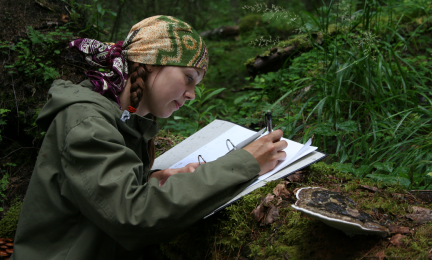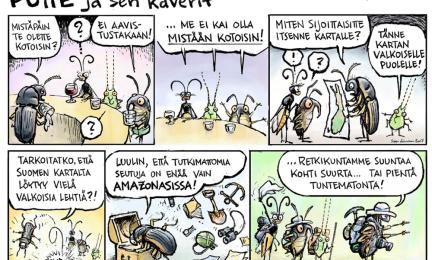Research Programme of Deficiently Known and Threatened Forest Species 2003–2016

Increased knowledge of species improves opportunities for preservation
The first PUTTE programme produced a great amount of scientifically high-quality research on species that supports forest conservation and endangered status assessments. The PUTTE project researched deficiently known species and their distribution, abundance and habitat requirements. Knowledge of species is necessary in the evaluation of how threatened species are and in the practical work of species protection and the effective targeting of measures to be taken. The programme was part of the Forest Biodiversity Programme for Southern Finland (METSO).
Plenty of new species for Finland and science
A research project in the PUTTE programme discovered 2,000 species that were new to Finland, no less than 556 of which were new to science. The largest number of species that were new to Finland were dipterans and basidiomycetes, but there were many other groups of species as well.
Scope of species’ endangered status assessment grew dramatically
Thanks to the information produced in the studies of the PUTTE programme, it has been possible to assess the endangered status of thousands of species that were previously so deficiently known that their status could not be assessed. In 2010, the endangered status assessment covered some 3,000–4,000 species that had not previously been assessed due to data gaps, and in 2019, thanks to the PUTTE programme, the scope of the endangered status assessment grew by more than a thousand new species.
A large number of scientific publications
The funding for the PUTTE programme enabled a large amount of scientific research. There are over 500 publications based on this funding, and up to half of them are scientific ones.
New species experts were trained in research projects
The research projects helped educate and develop new species experts and researchers. There were a total of 35 theses completed based on the results of the PUTTE programme, ten of which were doctoral dissertations.
New identification guides are a way to improve species data
The first PUTTE research programme included 18 guides for different species groups. Nature enthusiasts play a key role in producing occurrence data on species. Species spotting as a hobby is made possible by high-quality identification literature. The Finnish lichen guide (Suomen jäkäläopas) was awarded the Tieto-Finlandia prize in 2011. The book on Finnish heteroptera (Suomen luteet) received the honorary mention of Academic Book of the Year (Vuoden tiedekirja) in 2010.
Tuloksia kokoavia julkaisuja
Aapala, K. & Anttila, S. (ed.) 2018. Lenninsiipi — Putte-erikoisnumero. Lajisuojelun verkkolehti. Finnish Environment Institute. 24 pp.
Hallanaro E.L., Kuusela S., Juslén A. & Ryttäri, T. (ed.) 2016. Metsän salainen elämä. Gaudeamus. 395 pp.
Juslén, A., Kuusinen, M., Muona, J., Siitonen, J. & Toivonen, H. (ed.) 2008. Puutteellisesti tunnettujen ja uhanalaisten metsälajien tutkimusohjelma - PUTTE-loppuraportti. Suomen ympäristö 1/2008, Luonto, 146 pp. Ministry of the Environment.
Juslén, A. & Sirkiä, S. 2013. The unknown northern green: evaluation of a national forest biodiversity research program. Biodiversity and Conservation 22(3): 811–823.
Kuusela S., Anttila, S., Halme, P. & Juslén, A. 2017. Tutkimus tehostaa suojelutoimia: yhteenveto Puutteellisesti tunnettujen ja uhanalaisten metsälajien tutkimusohjelman vaikuttavuudesta. Metsätieteen aikakauskirja 2017: 6987. 5 pp.
